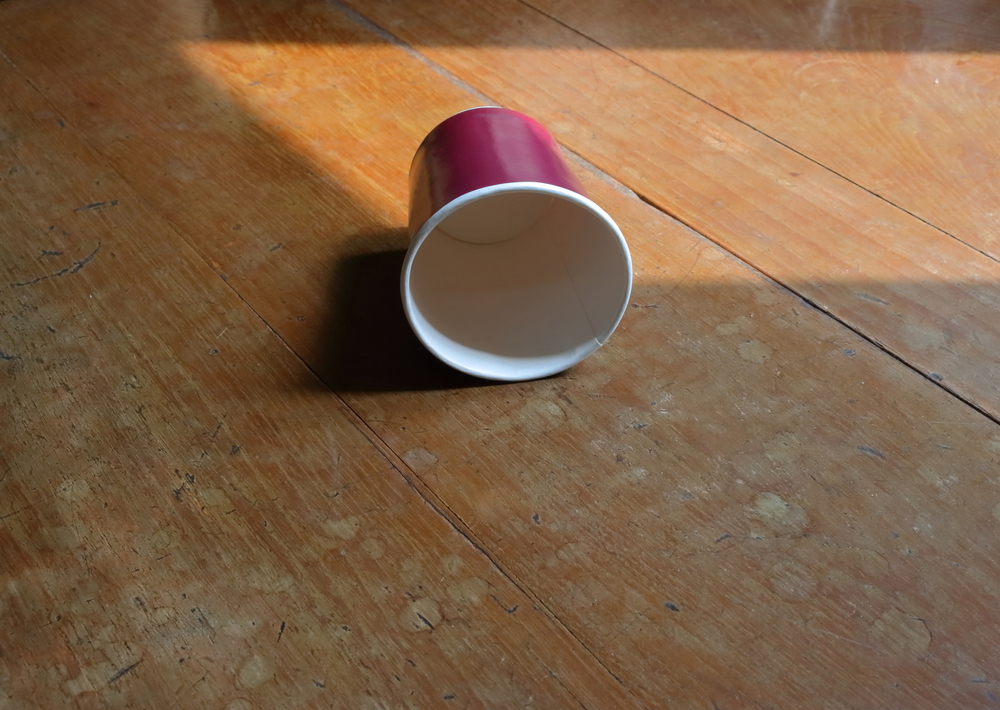Top 5 Types of Paper Cup Coatings You Need to Know
By Anttoni Taimela · 20. June 2024
Paper cup coatings make cups leak-proof and durable, affecting both your drink experience and the environment.
This article covers the top five types: Polyethylene, PLA, Water-Based, Wax, and Bio-Based coatings, along with their benefits and environmental impact.
Introduction
Welcome to the intricate world of paper cup coatings—a place where science meets everyday convenience.
This exploration will unravel the layers that contribute to the functionality, sustainability, and style of your paper cups.
From the classic coffee shop to your latest social event, paper cups are a staple, and their coatings play a pivotal role in their performance and environmental impact.
Understanding Paper Cup Coatings
 smiling young woman winter coat drinking cup of coffee
smiling young woman winter coat drinking cup of coffee
The remarkable nature of paper cups is largely due to their coatings. These often unnoticed layers work tirelessly to ensure a leak-free and enjoyable beverage experience.
But beyond their practical role, these coatings carry with them a weighty environmental significance that warrants our attention.
Importance of Coatings
Why bother coating a paper cup at all? The answer lies in the coatings’ abilities. They shield the paper from the villainous effects of moisture and other environmental factors.
Without these protective layers, a sturdy cup could quickly become a soggy mess from steaming hot coffee, spoiling the start of your day.
Environmental Impact
However, power and responsibility go hand in hand. Certain coatings, especially plastic-derived ones, present considerable environmental challenges.
Their persistence as unwelcome guests in the environment complicates recycling processes and poses potential ecological risks due to the presence of solvent residues.
Types of Paper Cup Coatings
 empty paper cup coated with polyethylene
empty paper cup coated with polyethylene
Within the world of coatings, diversity reigns supreme. There are five main players in the paper cup coating arena:
- Polyethylene (PE)
- Polylactic Acid (PLA)
- Water-Based Barrier
- Wax
- Bio-Based coatings
Each brings unique benefits and considerations, shaping the way we consume our favorite beverages.
Polyethylene (PE) Coating
The paper cup industry greatly relies on PE coatings, which offer a hard-to-penetrate, water-resistant armor.
Ideal for a range of food packaging needs, their versatility is matched by their effectiveness.
However, their Achilles’ heel is their non-biodegradable nature, a trait that begs for innovation and environmental mindfulness.
Polylactic Acid (PLA) Coating
Enter PLA coatings, the eco-conscious cousin of PE. Made from renewable resources like corn starch, PLA coatings offer a guilt-free, biodegradable alternative for your paper cup needs.
But quality comes at a cost, and PLA’s price tag reflects its premium, sustainable pedigree.
Water-Based Barrier Coating
Water-Based Barrier coatings emerge as the new kid on the block, championing the eco-friendly cause.
These products promise biodegradability without compromising on performance, compared to their solvent-based counterparts.
Innovations are continually enhancing their effectiveness, although cost remains a hurdle for widespread adoption.
Wax Coating
Wax coatings are the go-to for cold beverages, offering moisture resistance that’s ideal for a refreshing iced drink.
But introduce heat into the equation, and wax coatings falter, revealing a need for alternatives when it comes to your hot latte or tea.
Bio-Based Coatings
On the horizon of sustainability, bio-based coatings are making waves. Derived from natural materials like sugar cane, these food-grade coatings represent the next step in eco-friendly packaging.
Their limited market presence signals a vast potential for growth and innovation in the industry.
Benefits of Using Coated Paper Cups
Coated paper cups offer more than meets the eye. They harmonize a multitude of benefits to deliver a superior beverage experience.
From preventing leaks to retaining the perfect sipping temperature, coated cups are a testament to the ingenuity of modern packaging.
Leak Prevention
Coffee spills are a nuisance, and coated paper cups serve as the first line of defense against these mishaps.
The coatings act as a steadfast barrier, keeping the liquid where it belongs—inside the cup.
This reliability is key to the popularity of coated cups in cafes and social gatherings alike.
Heat Resistance
As for heat? Coated paper cups are up for the challenge, offering thermal protection for hot beverages, particularly those with PE coatings.
However, not all coatings can withstand the heat, reminding us that the right choice depends on the intended use.
Enhanced Durability
Durability is another feather in the cap of coated paper cups. They stand up to wear and tear, ensuring that your drink stays securely in your hand from the first sip to the last.
This resilience makes coated cups a practical choice for a range of applications.
Challenges and Considerations
Despite their benefits, coated paper cups do have challenges and considerations.
The selection of the most suitable coating involves navigating a complex landscape of factors, from cost to environmental impact.
We will now explore the critical factors influencing these decisions.
Cost Implications
The price of sustainability often comes with a higher cost, and this holds true for coatings like PLA and water-based barriers.
While their environmental benefits are clear, the financial implications can be a deterrent for some businesses and consumers.
Recycling and Composting
Recycling and composting are at the forefront of environmental considerations for paper cups.
The type of coating used can either facilitate or hinder these processes, with some coatings presenting significant challenges to effective recycling.
Using recycled materials in the production of paper cups can also contribute to a more sustainable approach.
Consumer Perception
Consumer perception plays a crucial role in the acceptance and demand for coated paper cups. As awareness of environmental issues grows, so does the preference for more sustainable options.
This shift in consumer attitudes is reshaping the industry and driving innovation.
Evaluating Environmental Impact
The evaluation of a paper cup coating’s environmental impact goes beyond mere compliance; it encompasses responsibility.
Minimizing the ecological footprint of our daily indulgences is a collective effort, and the choice of coating is an integral part of this endeavor.
Cost-Benefit Analysis
Lastly, it’s crucial not to overlook the cost-benefit analysis of a paper cup coating. Weighing immediate costs against long-term benefits like recyclability and reduced environmental impact is a significant aspect.
This analysis can guide businesses and consumers towards more mindful choices.
Summary
Reflecting on our journey through the world of paper cup coatings, we’ve uncovered the nuances that define their functionality and sustainability.
From the reliable PE coating to the pioneering bio-based alternatives, each option serves a purpose and brings its own set of considerations.
As we strive for a balance between convenience and environmental responsibility, the evolution of paper cup coatings remains a testament to our ingenuity and commitment to a greener future. 🌍
Let this exploration be a reminder of the small choices that make a big impact. The next time you sip from a paper cup, think of the remarkable technology that went into its making and how your choices contribute to a more sustainable world.
Frequently Asked Questions
Are all paper cup coatings bad for the environment?
No, not all paper cup coatings are bad for the environment. Sustainable alternatives like PLA and water-based barrier coatings are biodegradable and have a lesser ecological footprint, unlike traditional plastic coatings.
Can coated paper cups be recycled?
Yes, coated paper cups can be recycled depending on the type of coating used. Cups with water-based coatings are easier to recycle with other paper products, while cups with PE coatings are challenging to recycle due to the difficulty in separating the plastic from the paper.
Why are PLA-coated paper cups more expensive than PE-coated ones?
PLA-coated paper cups are more expensive than PE-coated ones due to their use of renewable resources, biodegradability, and compostability, which incur higher production costs.
How long does it take for a PLA-coated paper cup to decompose in a compost facility?
PLA-coated paper cups can decompose in industrial compost facilities in less than a month under the right conditions of temperature and aeration, making them an environmentally friendly choice.
What is the most eco-friendly paper cup coating available on the market?
Consider using bio-based coatings such as PLA and water-based barrier coatings, as they are renewable and biodegradable, making them some of the most eco-friendly options available today.

